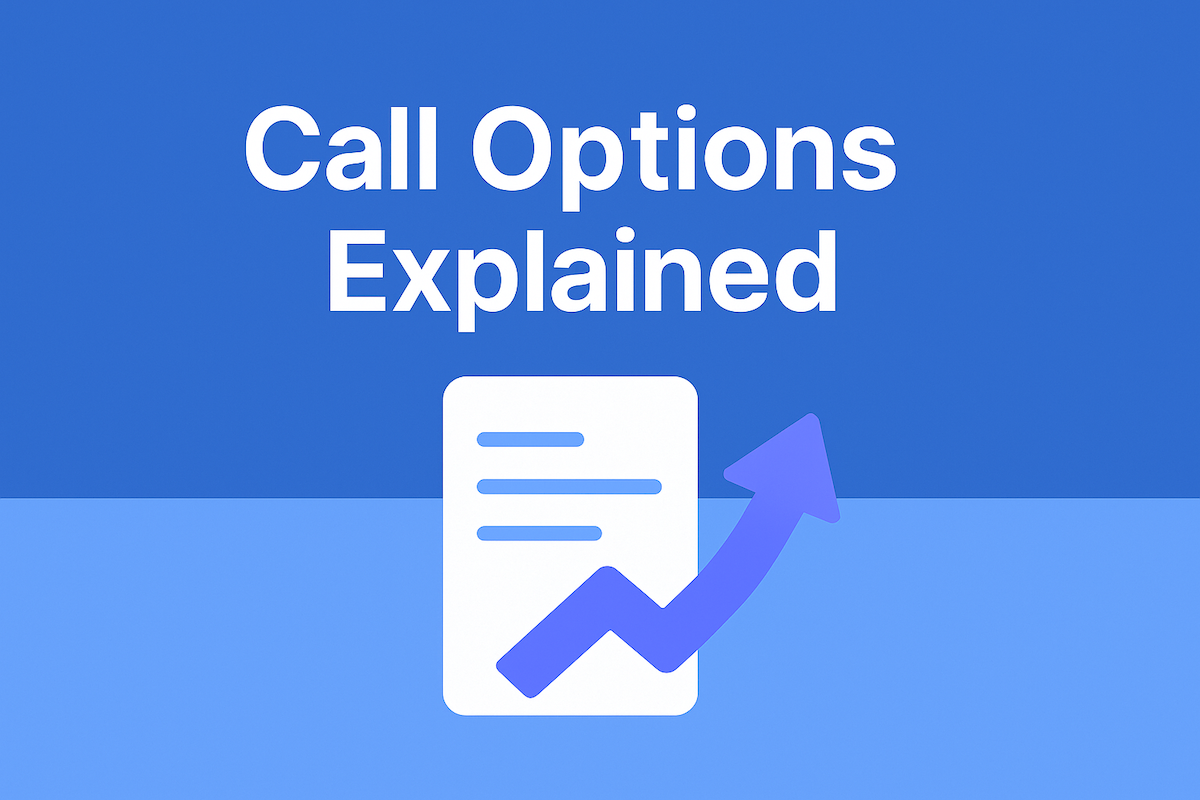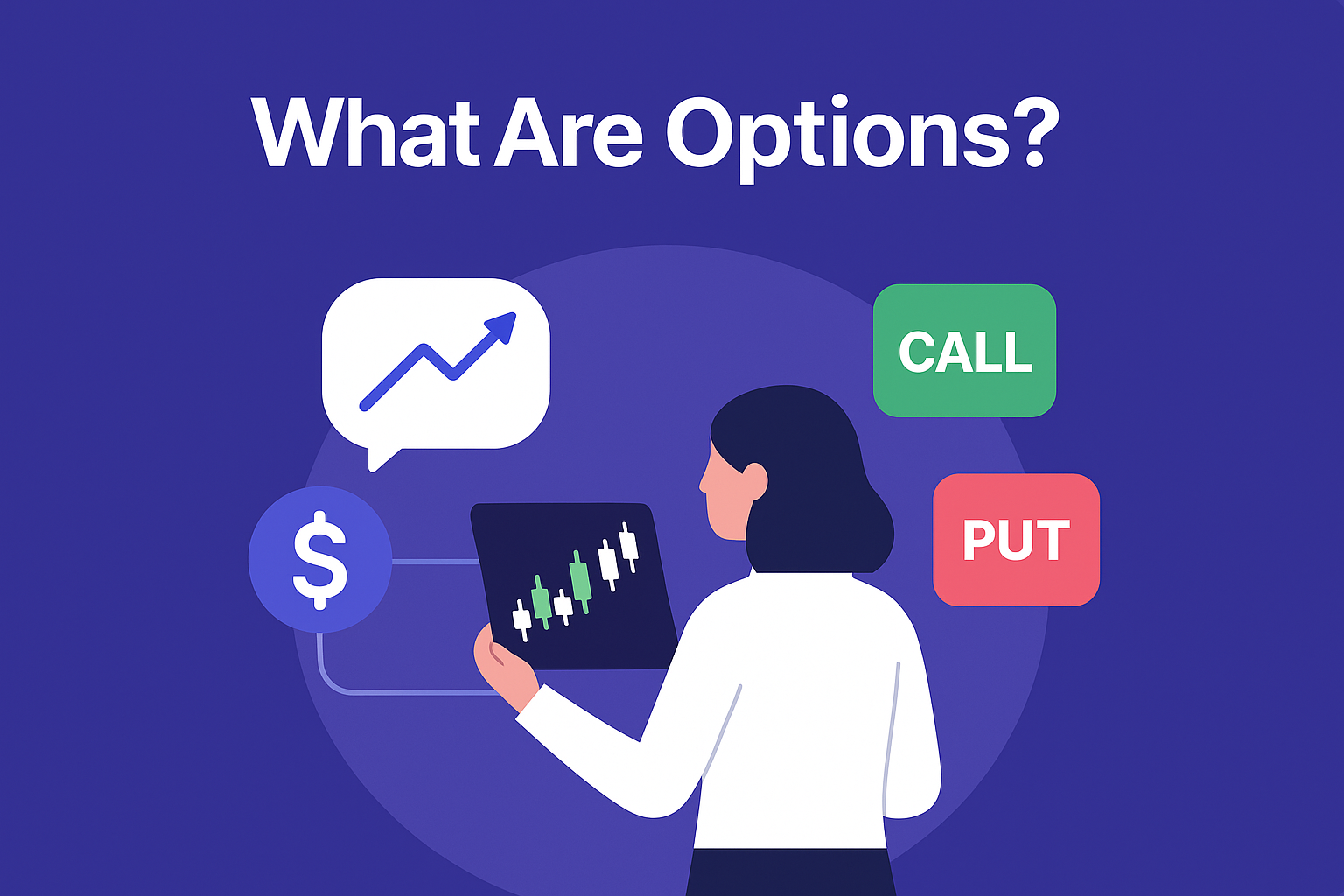Call Options Explained: Your Complete Guide to Bullish Strategies
Call options are the cornerstone of bullish options strategies, offering traders the opportunity to profit from rising stock prices with limited risk and maximum leverage. Whether you're betting on Tesla's next earnings surprise or Apple's product launch, understanding call options is essential for any serious options trader.
What Are Call Options?
A call option gives you the right to buy 100 shares of a stock at a specific price (the strike price) before a certain date (expiration). When you buy a call, you're betting the stock will rise above your strike price plus the premium you paid.
Think of it like making an offer on a house with a 30-day option to buy. You pay a small fee for this right, but you're not obligated to follow through if conditions change.
Call Option Components Breakdown
Strike Price: The price at which you can buy the stock. If Tesla is at $200 and you buy a $210 call, your strike is $210.
Expiration Date: Your deadline to exercise the option. Options expire on Fridays, with weekly, monthly, and quarterly cycles available.
Premium: What you pay for the call option. This is your maximum risk and represents the option's current market value.
Intrinsic Value: How much the option is worth if exercised immediately. A Tesla $200 call has $10 intrinsic value if Tesla trades at $210.
Time Value: The extra amount beyond intrinsic value that traders pay for time remaining until expiration.
When to Buy Call Options
Bullish on Individual Stocks: If you believe Apple will rally after their iPhone announcement, buying calls lets you participate in the upside with less capital than buying shares.
Earnings Plays: Companies like Meta often see significant price moves after earnings. Call options amplify these movements, though they also amplify losses if you're wrong.
Technical Breakouts: When Amazon breaks above a resistance level, calls can capitalize on momentum moves that might follow.
Event-Driven Catalysts: FDA approvals for biotech stocks, product launches for tech companies, or merger announcements all create opportunities for call buyers.
Real Examples: Call Options in Action
Tesla Earnings Play
Tesla trades at $195 before earnings, and you expect a positive surprise. You buy a $200 call expiring the Friday after earnings for $8.50 per share ($850 total).
Scenario 1: Tesla beats earnings and jumps to $220
- Your call is worth $20 per share ($220 - $200)
- Profit: $1,150 ($2,000 - $850 cost)
- Return: 135%
Scenario 2: Tesla disappoints and drops to $180
- Your call expires worthless
- Loss: $850 (100% of premium)
Apple Product Launch Strategy
Apple announces their annual September event, and you're bullish on new iPhone sales. Apple trades at $175, and you buy a $180 call expiring in October for $4.20 ($420 total).
The key here is giving yourself enough time. Even if Apple doesn't immediately rally, you have weeks for the trade to work out as iPhone sales data emerges.
Advanced Call Buying Strategies
In-the-Money Calls: Higher probability of profit but more expensive. Buying a Tesla $190 call when Tesla trades at $200 costs more but has better odds of success.
Out-of-the-Money Calls: Lower cost but lower probability. That Tesla $220 call might only cost $2, but Tesla needs a significant move to be profitable.
LEAPS Calls: Long-term calls (over a year to expiration) that act more like stock substitutes. Perfect for long-term bullish theses on companies like Microsoft or Google.
Time Decay: Your Enemy as a Call Buyer
Time decay (theta) constantly erodes option value. A call worth $5 with 30 days to expiration might only be worth $3 with 15 days remaining, even if the stock price hasn't changed.
This is why timing matters. Buying calls with 45-60 days to expiration often provides the best balance of time value and cost efficiency.
Managing Call Positions
Take Profits: Many successful traders take profits at 50-100% gains rather than holding for maximum theoretical profit.
Cut Losses: If a call loses 50% of its value quickly, consider closing the position unless your thesis has changed dramatically.
Roll Options: If your timing was off but thesis intact, you might "roll" your position by closing the current call and buying one with more time.
Common Call Option Mistakes
Buying Calls Right Before Expiration: Time decay accelerates in the final week, making these lottery tickets rather than investments.
Ignoring Implied Volatility: Buying expensive options before earnings often leads to losses even if you're right about direction due to volatility crush.
No Exit Strategy: Going in without knowing when you'll take profits or cut losses leads to poor decision-making under pressure.
Call Options vs. Buying Stock
For a Tesla trade from $200 to $220:
- Buying 100 shares: $20,000 investment, $2,000 profit (10% return)
- Buying one $200 call for $8: $800 investment, $1,200 profit (150% return)
The leverage is obvious, but so is the risk. The stock buyer keeps their $20,000 if Tesla stays flat; the call buyer loses their entire $800.
Selecting the Right Calls
Liquidity First: Stick to options with tight bid-ask spreads and decent volume. Apple, Tesla, Microsoft, and major ETFs like SPY offer the best liquidity.
Strike Selection: New traders often prefer at-the-money or slightly out-of-the-money strikes for balanced risk-reward.
Time Frame: Give yourself enough time for your thesis to play out. 30-45 days minimum for most strategies.
Key Takeaways
- Call options provide leveraged exposure to rising stock prices with limited downside risk
- Buying calls requires being right about direction, timing, and magnitude of the move
- Time decay works against call buyers, making timing crucial for success
- Liquid options on stocks like Tesla, Apple, and Meta offer the best trading opportunities
- Successful call buying requires strict profit-taking and loss-cutting discipline
- Consider implied volatility and time value, not just the stock's potential movement
Frequently Asked Questions
Q: What's the maximum I can lose buying calls? A: Your maximum loss is limited to the premium paid. If you buy a call for $500, that's the most you can lose.
Q: When should I exercise a call option vs. selling it? A: Almost always sell rather than exercise. Exercising throws away remaining time value, while selling captures it.
Q: Can I buy calls in my retirement account? A: Most brokers allow call buying in IRAs since it's considered lower risk than other options strategies.
Q: How do I know if a call is expensive or cheap? A: Compare implied volatility to historical volatility. High IV often means expensive options, while low IV suggests cheaper options.
Q: Should I buy calls or LEAPS for long-term plays? A: LEAPS (options with over a year to expiration) work better for long-term theses, while regular calls suit shorter-term catalysts.
Optimize Your Call Option Trading
Tracking call option performance across multiple positions can get complex quickly. Know which strikes and timeframes work best for your style, and identify patterns in your profitable trades.
Sign Up for OptionTracker.app to monitor your call options portfolio, track P&L by strategy, and optimize your entry and exit points with professional-grade analytics.
Get weekly call option strategies and market insights delivered to your inbox. Join Our Newsletter for expert analysis and trade ideas.
Disclaimer: Options trading involves substantial risk and is not suitable for all investors. Call options can expire worthless, resulting in total loss of premium paid. Past performance does not guarantee future results. Please consider your investment objectives and risk tolerance before trading options. This content is for educational purposes only and should not be considered personalized investment advice.


